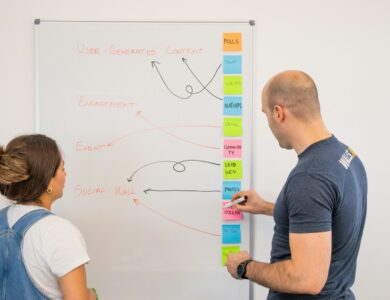
Introduction:
Feedback is one of the most effective tools for learning and improvement—but only when delivered and received constructively. When feedback feels like criticism, it shuts people down. When done well, it empowers them. Constructive feedback bridges the gap between current performance and desired outcomes, helping learners grow with clarity and confidence. For educators and trainers, mastering this skill is non-negotiable.
What Makes Feedback Constructive?
Constructive feedback is:
- Specific: Targets behaviors or outcomes, not personality.
- Actionable: Offers clear steps to improve.
- Balanced: Includes both strengths and areas for growth.
- Timely: Delivered soon after the event for maximum relevance.
- Respectful: Focused on development, not judgment.
Common Mistakes in Giving Feedback:
- Vagueness: “Do better next time” offers no insight.
- Over-criticism: Focusing only on what’s wrong creates defensiveness.
- Delays: Waiting too long disconnects feedback from context.
- Generalizations: “You’re always unprepared” exaggerates and blames.
Best Practices for Giving Feedback:
- Use the SBI Model (Situation, Behavior, Impact):
- Situation: “During yesterday’s group presentation…”
- Behavior: “…you interrupted your teammates multiple times…”
- Impact: “…which made it hard for others to contribute.”
- Start with Strengths:
Acknowledge what worked well before offering suggestions. This boosts receptivity and builds trust. - Invite Self-Assessment:
Ask the learner how they felt it went. Self-reflection primes them to receive feedback and encourages ownership. - Focus on the Future:
Feedback should end with a plan. “Next time, try…” gives learners direction and hope. - Adapt to Learning Styles:
Some prefer written notes, others verbal conversation. Choose a medium that suits the individual.
Receiving Feedback Gracefully:
Educators must also teach learners how to receive feedback:
- Listen without interrupting.
- Ask clarifying questions.
- Reflect before reacting.
- Apply suggestions with intention.
Modeling this behavior yourself shows maturity and builds a feedback-positive culture.
Peer-to-Peer Feedback:
Group learning is rich with feedback opportunities. Teach students to use “I” statements: “I noticed you explained that clearly,” or “I was confused when…”
Use structured feedback forms or sentence starters to guide learners in giving useful comments.
Feedback in Remote Learning:
Digital tools can support feedback loops. Use tools like Google Docs comments, video annotations, or feedback rubrics on platforms like Padlet or Jamboard.
Create regular checkpoints where learners request and give feedback in breakout rooms or discussion boards.
Conclusion:
Constructive feedback is an essential life skill—not just a classroom tool. When learners experience feedback as supportive rather than judgmental, they grow in competence, confidence, and character. By creating a feedback-rich culture, educators empower learners to reflect, improve, and thrive.




